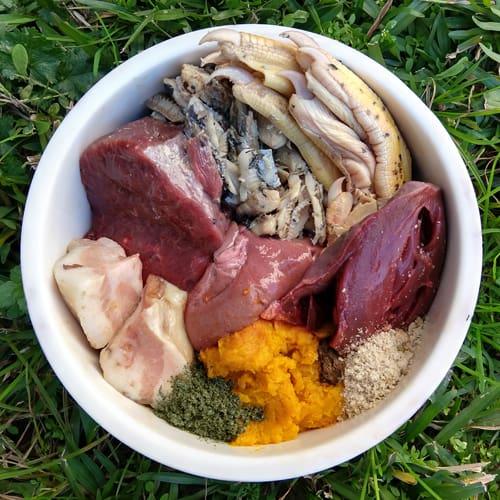When it comes to our furry companions, their health and happiness are always top priorities. As pet owners, we often find ourselves navigating a myriad of choices to ensure they lead fulfilling lives. One such decision revolves around their diet, particularly the question: Is raw meat safe for dogs? This complete guide aims to shed light on this topic, providing you with the information needed to make informed choices for your canine friend. With a warm and instructive approach, we will explore the benefits, risks, and best practices associated with feeding raw meat to dogs, helping you to determine what suits your pet’s needs best. Whether you’re considering a switch to a raw diet or simply seeking to expand your knowledge, this article is designed to be your trusted companion on this journey.
Understanding the Nutritional Needs of Your Canine
When considering raw meat for your furry friend, it’s crucial to recognize their unique dietary requirements. Dogs, being descendants of wolves, have a natural inclination towards meat, yet it’s important to ensure their diet is balanced. A raw meat diet should be supplemented with essential nutrients that might not be present in meat alone. Proteins, fats, and a moderate amount of carbohydrates are key to a healthy canine diet, but don’t forget about vitamins and minerals. These can be obtained from a variety of sources such as vegetables, fruits, and specially formulated supplements.
- Proteins: Vital for muscle development and energy.
- Fats: Necessary for a shiny coat and healthy skin.
- Carbohydrates: Provide quick energy.
- Vitamins & Minerals: Support overall health and well-being.
When opting for a raw meat diet, it’s essential to consult with a veterinarian to ensure it meets your dog’s specific needs. Every dog is unique, and factors such as age, breed, and activity level play a significant role in determining their nutritional requirements. Proper planning and attention to detail can help in crafting a diet that supports a long and healthy life for your beloved pet.

Recognizing Potential Risks and Health Concerns
When considering a raw meat diet for your canine companion, it’s essential to be aware of the potential risks and health concerns involved. While many dogs thrive on a diet of raw meat, pathogens such as salmonella and E. coli pose a significant risk to both pets and their human families. These bacteria can lead to severe gastrointestinal issues in dogs and may also be transmitted to humans through handling contaminated food or surfaces. It’s crucial to maintain strict hygiene practices, such as thoroughly washing hands and disinfecting food preparation areas, to minimize these risks.
- Bacterial Infections: Raw meat can harbor harmful bacteria that may cause infections.
- Nutritional Imbalance: Without careful planning, a raw diet might lack essential nutrients, leading to deficiencies.
- Bone Hazards: Whole bones, often included in raw diets, can splinter and cause internal injuries or blockages.
Beyond bacterial concerns, nutritional balance is another critical consideration. A raw meat diet needs to be meticulously crafted to ensure that it provides all necessary vitamins and minerals, as an imbalance could lead to long-term health issues. Additionally, feeding whole bones, a common component of raw diets, requires caution. Although beneficial for dental health, bones can splinter, posing a choking hazard or causing internal damage. Therefore, it’s advisable to consult with a veterinarian or a pet nutritionist to tailor a raw diet that is both safe and nutritionally complete for your furry friend.
Selecting the Best Raw Meat Options for Your Dog
When considering raw meat for your furry friend, it’s crucial to prioritize quality and variety. Choose meats that are fresh and sourced from reputable suppliers, as this reduces the risk of contamination and ensures your dog receives the best nutrition possible. Here are some popular raw meat options that can be included in your dog’s diet:
- Chicken: A staple in many raw diets, chicken is rich in protein and easy to digest. Opt for organic or free-range chicken to avoid antibiotics and hormones.
- Beef: Known for its high iron content, beef is another excellent choice. Look for grass-fed beef, which offers a better balance of omega-3 and omega-6 fatty acids.
- Lamb: Ideal for dogs with food sensitivities, lamb provides a good source of zinc and B vitamins. It’s often considered a hypoallergenic option.
- Fish: Packed with omega-3 fatty acids, fish like salmon and sardines can support your dog’s coat and skin health. Ensure the fish is wild-caught to minimize exposure to toxins.
Variety is key to a balanced raw diet. Rotate different protein sources to provide a wide range of nutrients and keep your dog’s meals exciting. Remember to introduce new meats gradually to monitor for any adverse reactions.
Guidelines for Safely Preparing and Serving Raw Meat
Ensuring the safety of raw meat for your furry friend involves a few essential practices. Begin by sourcing high-quality meat from reputable suppliers. This reduces the risk of contamination from harmful bacteria. It’s also wise to store raw meat properly in the refrigerator or freezer until you’re ready to serve it. When handling raw meat, always wash your hands thoroughly and sanitize any surfaces or utensils that come into contact with it to prevent cross-contamination.
- Use separate cutting boards for raw meat and other foods.
- Thaw meat safely in the refrigerator, not on the countertop.
- Inspect the meat for any off-smells or unusual colors before serving.
When it comes to serving, portion the meat appropriately for your dog’s size and dietary needs. Observing your dog’s reaction to raw meat is crucial, so watch for any signs of discomfort or allergies. Always introduce new foods gradually into their diet. By adhering to these guidelines, you can help ensure that your dog’s raw meat meals are both nutritious and safe.

